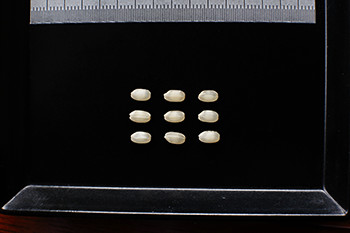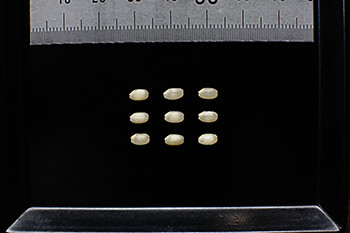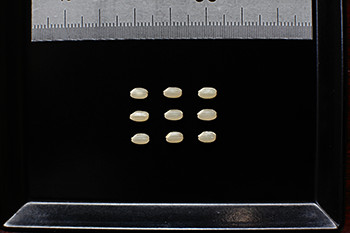Shuzō kōteki mai・shinpaku-mai・sakamai
- 【English】
- (True) brewer’s rice; shinpaku rice; sake rice
- 【Japanese】
- 酒造好適米・心白米・酒米
Large-grained rice with shinpaku (an opaque white portion in the middle of the grain) has long been preferred for making sake. This kind of rice is called shuzo koteki mai (酒造好適米), with characters meaning “rice ideal for brewing”, also known as shinpaku-mai (“shinpaku rice”). Such true brewer’s rice is distinguished from ippan-mai, which is the term for uruchi-mai used as eating or table rice.
Under the title “brown rice for brewing”, the names of true brewer’s rice varieties are listed in the Agricultural Products Standards Regulations in accordance with the Agricultural Products Inspection Law, and varieties grown by specific prefectures are registered.
Some of the main varieties include Yamada Nishiki, Gohyakumangoku (五百万石), Omachi (雄町) and Miyama Nishiki (美山錦). In recent years, major sake production regions across the nation have developed their own varieties of rice for use in brewing. The ideal growing environment (depending on climate and soil composition) varies by strain, and even the same strain varies in quality when grown in different regions.
The term sakamai (“sake rice”) is sometimes used in the broad sense of all rice for sake brewing, including both true brewer’s rice and eating rice (when it is used in brewing). However, as true brewer’s rice has historically been considered most suitable for brewing, the term sakamai is commonly used to refer to this.

yamadanishiki genmai

omachi genmai

kinuhikari (table rice strain) genmai

